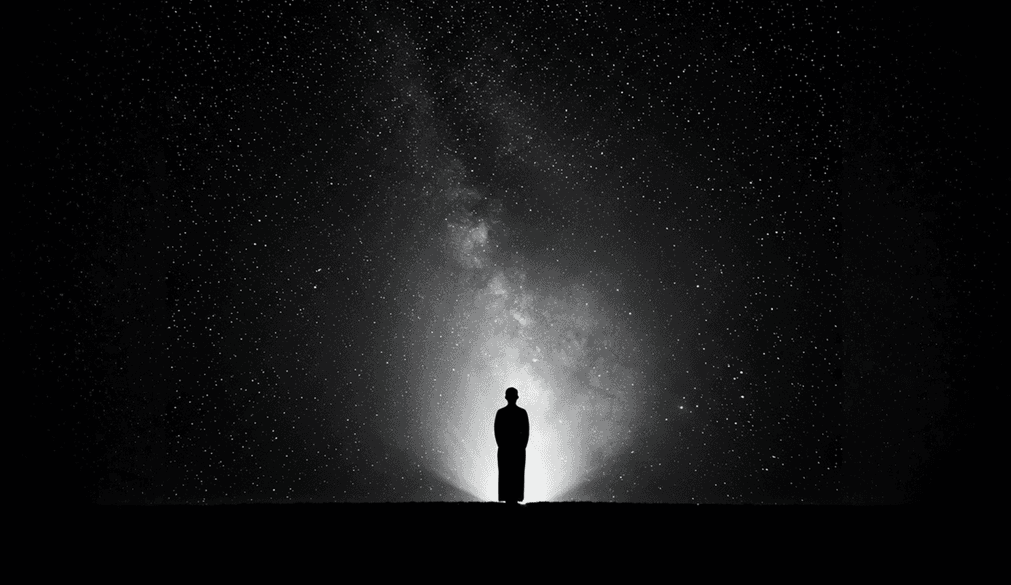What is the Smallest Thing in the World? Humanity's Quest for the Universe's Tiniest Building Blocks
Hind MoutaoikiIR&D Manager
Tue May 06 2025

There is something profoundly moving about humanity's eternal quest to understand the infinitesimal. In the silent spaces between what we can see and what we can only imagine, scientists have pursued the smallest components of our universe with a passion that borders on the spiritual. It is a journey that connects us across millennia to the first humans who gazed at the stars and wondered what mysteries the cosmos might hold.
There is something profoundly moving about humanity's eternal quest to understand the infinitesimal. In the silent spaces between what we can see and what we can only imagine, scientists have pursued the smallest components of our universe with a passion that borders on the spiritual. It is a journey that connects us across millennia to the first humans who gazed at the stars and wondered what mysteries the cosmos might hold.
The Ancient Quest Begins
When the Greek philosopher Democritus first proposed the concept of the "atomos"—the indivisible, smallest unit of matter—in the 5th century BCE, he could hardly have imagined the extraordinary journey his simple question would inspire. "What is the smallest thing in the world?" he essentially asked, setting humanity on a path of discovery that continues to this very day.
Standing on a beach, Democritus contemplated whether the sand could be divided infinitely or if, at some point, one would reach a particle so small it could no longer be cut. His intuition led him to propose the existence of these fundamental building blocks—atoms—though he lacked the tools to prove their existence. How remarkable that with nothing but the power of thought, he glimpsed a truth that would take over two thousand years to confirm.
The Atom: No Longer Indivisible
For centuries, the atom stood as the pinnacle of smallness in our understanding of the physical world. The very word "atom" comes from the Greek "atomos," meaning uncuttable or indivisible. Yet science has a way of continually redefining what we think we know.
By the early 20th century, the pioneering work of scientists like J.J. Thomson, Ernest Rutherford, and Niels Bohr revealed that the supposedly indivisible atom was, in fact, a complex structure with even smaller components. The discovery of electrons, protons, and neutrons transformed our understanding of matter, revealing that these subatomic particles were the true building blocks of everything we see and touch.
Imagine the wonder and perhaps even the touch of melancholy these scientists must have felt as they dismantled the atom from its pedestal. Each discovery answered questions while simultaneously creating new ones—a pattern that continues to define the frontier of physics.
Beyond the Subatomic: The Quantum Realm
The middle decades of the 20th century brought perhaps the most revolutionary shift in our understanding of the infinitesimal. As accelerators grew more powerful and detection equipment more sensitive, physicists made a startling discovery: protons and neutrons themselves were not fundamental. Hidden within these particles were even smaller entities—quarks.
Quarks exist in six "flavours": up, down, strange, charm, top, and bottom. These whimsically named particles combine in various ways to form the protons and neutrons that make up atomic nuclei. Up and down quarks are the most common, forming the protons (two up quarks and one down) and neutrons (two down quarks and one up) that constitute ordinary matter.
The electron, meanwhile, belongs to another family of fundamental particles called leptons, which also includes the muon, tau, and neutrinos. Despite intensive investigation, electrons have stubbornly resisted all attempts to reveal any internal structure—as far as we can tell, they truly are point-like particles with no spatial extent whatsoever.
There is something almost mystical in contemplating particles so small they appear to have no physical dimension. How can something with no size exist? Yet the mathematics of quantum field theory insists that this is so. The electron, in some profound sense, is pure existence without extension—a concept that challenges not just our understanding of physics but our very conception of reality.
The Standard Model: Our Current Understanding
Today, our most complete picture of nature's building blocks is encapsulated in what physicists call the Standard Model—a theoretical framework that classifies all known fundamental particles and describes three of the four known fundamental forces (the electromagnetic, weak, and strong interactions, but not gravity).
According to this model, there are 17 fundamental particles: six quarks, six leptons, four gauge bosons (the particles that carry forces), and the Higgs boson (which gives other particles their mass). These particles, as far as we currently know, have no internal structure and cannot be divided further. They are, in the modern sense, the true "atomos" that Democritus sought.
The discovery of the Higgs boson at the Large Hadron Collider (LHC) in 2012 was a triumphant confirmation of the Standard Model's predictions. After decades of theoretical work, experimentalists finally observed this elusive particle, the last piece of the Standard Model puzzle. Peter Higgs, who first proposed the existence of this particle in 1964, was in the audience when its discovery was announced, wiping tears from his eyes as decades of work reached fruition. Such moments remind us that the pursuit of fundamental truth is not merely an intellectual exercise but a deeply human endeavour.
Pushing the Boundaries: The LHC and Beyond
The Large Hadron Collider, straddling the Franco-Swiss border in a circular tunnel 27 kilometres in circumference, represents humanity's most ambitious attempt to probe the smallest scales of nature. Within this massive instrument, protons are accelerated to 99.9999991% the speed of light and made to collide, creating conditions similar to those that existed just after the Big Bang.

The energies achieved in these collisions—up to 13 trillion electron volts—allow scientists to peer into distances as small as 10^-19 metres, roughly 1/10,000 the size of a proton. It is a testament to human ingenuity that we can probe such inconceivably small scales. Yet even with this extraordinary machine, we have found no evidence that quarks or leptons possess any internal structure. If they are composed of even smaller constituents, those constituents must be smaller than current technology can detect.
There is something both frustrating and thrilling in this realisation. We have pushed the frontiers of knowledge so far, yet still find ourselves with unanswered questions. The hunt continues, with plans for even more powerful accelerators that might push our understanding to yet smaller scales.
String Theory: Vibrations in Multiple Dimensions
When confronted with the limits of experimental evidence, theoretical physicists have ventured bold hypotheses about what might exist beyond our current ability to measure. Perhaps the most elegant of these is string theory, which proposes that all particles are actually tiny, one-dimensional "strings" vibrating in multiple dimensions.
According to string theory, the different particles we observe—electrons, quarks, photons—are simply different vibrational patterns of these fundamental strings. The typical size of a string would be around the Planck length, approximately 10^-35 metres, more than a billion billion times smaller than what the LHC can probe.
If string theory proves correct, it would represent perhaps the ultimate answer to Democritus's question. Strings would be the irreducible building blocks of all matter and energy in the universe. Yet string theory remains highly speculative, with no direct experimental evidence to support it. It exists primarily as a mathematical construct of breathtaking beauty that might—or might not—correspond to physical reality.
There is something profoundly poetic about the possibility that the ultimate nature of reality might be musical—that particles are essentially notes played on cosmic strings. If confirmed, it would represent a harmony between mathematics, physics, and music that would surely have delighted the ancient Greeks.
The Quantum Foam: Spacetime Itself
At the very smallest scales—the Planck scale—our current theories suggest that spacetime itself becomes granular and fluctuating, often described as a "quantum foam." At this level, the smooth continuum of space and time breaks down into a seething cauldron of virtual particles popping in and out of existence, borrowing energy from the vacuum for brief moments allowed by Heisenberg's uncertainty principle.
This suggests a profound truth: emptiness itself is not truly empty. The vacuum is alive with activity at the quantum level, a roiling sea of potential from which particles emerge and into which they dissolve. In this sense, perhaps the smallest thing in our universe is not a thing at all, but a quantum of spacetime itself—a unit below which the very concept of "location" loses meaning.
The Wisdom in Not Knowing
Perhaps the greatest wisdom lies in embracing the beauty of the question itself, rather than demanding a final answer. The search for the smallest thing connects us across time—from ancient Greece to modern Switzerland—in a shared human endeavour to understand our reality.
When you next hold something in your hand—be it a stone, a flower, or simply feel the weight of your own body—take a moment to marvel at the extraordinary journey of discovery that has revealed the quarks and electrons that make up your physical being. Consider that these particles, unimaginably small, may themselves not be the end of the story.
In this ongoing quest, we find one of humanity's noblest pursuits: the desire to understand nature not for profit or power, but simply because the universe exists and we wish to comprehend it. There is something deeply spiritual in this pursuit, transcending cultural and temporal boundaries.
And so the ancient question endures, inspiring each new generation of curious minds: What is the smallest thing in the world? The answer remains elusive, beckoning us forward into the unknown with the promise that there will always be new wonders to discover in the infinitesimal scales of our magnificent universe.
previous
The Silent Wisdom: Earth's Most Brilliant Animal Minds
next
7 rules of life: Einstein's Wisdom for a Life Well-Lived
Share this
Hind MoutaoikiI
R&D Manager
Hind is a Data Scientist and Computer Science graduate with a passion for research, development, and interdisciplinary exploration. She publishes on diverse subjects including philosophy, fine arts, mental health, and emerging technologies. Her work bridges data-driven insights with humanistic inquiry, illuminating the evolving relationships between art, culture, science, and innovation.
More Articles

The Hard Truths: Three Critical Barriers Standing Between AI Innovation and Universal Accessibility

Elder Voices of the Millennium: Adyashanti

The Rules of the Game: How Global Policy Is Shaping AI Accessibility from Rights to Reality

The Rise and Fall of Civilisations: A Complete History

When Profit Meets Purpose: How Microsoft and Corporate Leaders Are Proving the Business Case for Accessibility





